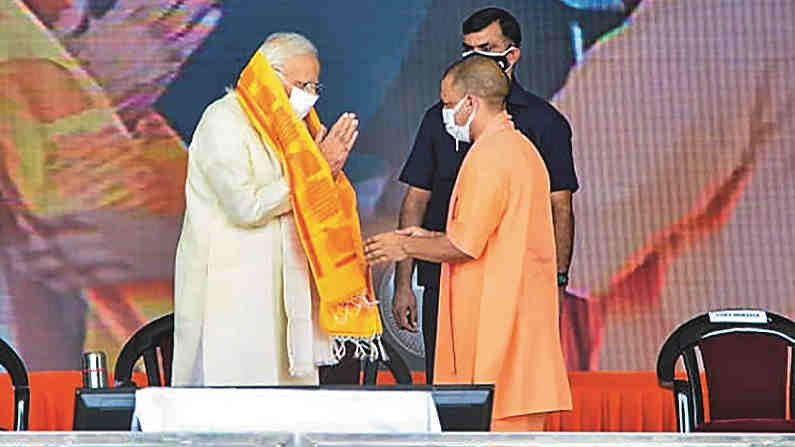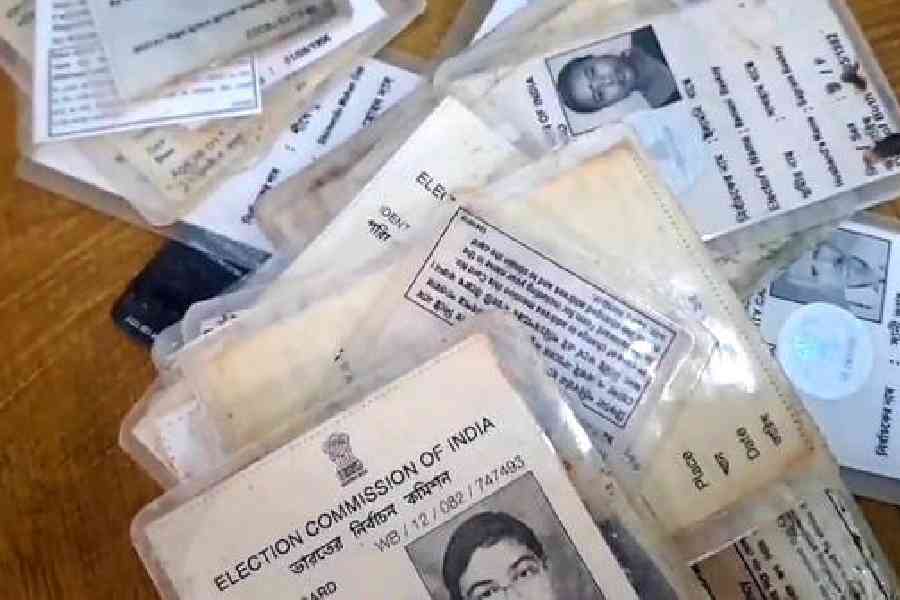The vaccination certificate that erupted from the printer had the prime minister’s face on it. It had sundry other things as well: it said I had been vaccinated twice with the same brand of vaccine; it gave the dates of vaccination; it said I was a female of somewhat advanced age. It also spelt my name correctly. But it was the face that struck me first. I had absorbed with a kind of strained inattention the fact that Narendra Modi’s picture had been put on vaccine certificates and that the Opposition was irate, but its impact was completely unexpected. I would now have it permanently in my home, inhabiting the drawer of a table I love, ensconced among documents I must seize to take with me in case of earthquake or fire for they tell the State who I am in the State’s terms. I almost wondered if the image rode on an invisible winged horse, but I pulled myself up. No one had said they had bought the horse, had they? Just as nobody had intruded into our borders last year or has been there since.
Of course, I had no choice in the matter. Words such as ‘choice’, ‘reason’ or ‘humour’ are now meaningless collections of letters scattered out of lexicons like the counters of a defeated Scrabble player. Meanwhile, the objections to Modi’s picture on vaccine certificates ran roughly thus: the vaccines did not emanate from the prime minister, scientists sweated and raced to relieve the world of suffering and loss; the government was promoting the Modi cult; it was using a devastating pandemic to its own advantage; vaccination was part of the government’s job, not a favour to its citizens — and so on.
Eddies spread from the central plop in the pool, beginning with the Trinamul Congress’s complaint to the Election Commission that the model code of conduct was being violated before the assembly elections. The face was digitally masked, to be unmasked again after the results. But when states had to buy vaccines for the 18-44 age group, these certificates began to carry pictures of the chief ministers of Chhattisgarh, Jharkhand and West Bengal in their respective states. They were paying. A TMC leader responded to the Bharatiya Janata Party’s outcry by stating that if the BJP had not done it first they would not have done it either. But the prime minister, questioned by the Supreme Court, announced that the Centre would procure the vaccines for the 18-44 age group from June 21. So his face was back in its old place. And in their protest against Modi’s ownership of the vaccination drive through the picture-changing game, the Opposition-led governments had willy-nilly accepted the logic of ‘S/He who pays, displays’. The people pay — in every case.
The inappropriateness of putting the prime minister’s image on flexes celebrating the biggest vaccination drive in the world when the drive is flagging because of vaccine shortage, or on hoardings screaming that vaccination is free as though it is a special prize for being Indian, has been emphatically pointed out. But that does not deter the government, for the party in power wishes to underline, with equal emphasis, its message of appropriation. But the prime minister’s portrait has its own meaning. It is neither misleading nor even — heaven forbid — a falsehood, but a kind of non-speech act, a term I use with profuse apologies to J.L. Austin and John Searle. The image acts, in the sense that it seems to externalize the informing presence of the spirit that moves all things Indian; the message it is pasted on, however gung-ho, is ultimately secondary.
All images of ministers on notices of public sector projects or schemes for aid suggest ownership and are advertisements of the government run by the leader’s party. This can spill into the sphere of government-sponsored cultural events. The practice is not new; Indian politicians have always played on the people’s love of icons to stamp their presence, or that of their past leaders, on any programme associated with their party-led government. Pictures of past leaders were common earlier, but politicians in power have now taken over the icon-space. That may expand. During the pandemic in April 2020, bags of relief material stamped with the image of the Congress chief minister of Punjab evoked protests from the Opposition, and over 13,000 school bags stamped with the images of E.K. Palaniswami, then the Tamil Nadu chief minister, and of the late J. Jayalalithaa were packed away by the rival party just before the 2021 state elections. Accused of megalomania, Mayawati declared that her own statues of bronze, cement and marble put up during her rule in Uttar Pradesh were expressions of the people’s will, while the statues of elephants were architectural designs, not representations of her party’s symbol.
Even if not so basic as Mayawati’s statues, the pictures of the prime minister continue a familiar tradition, although refined into something rich and strange. In spite of the various messages clinging to its imaginary coat-tails, the image itself refers to nothing, it just is. Its performance lies in an imagined silence, for its presence alone is transformative. This is best understood by the numerous billboards that have sprouted across Delhi showing Modi with a slightly diminutive Yogi Adityanath. These are paeans to UP as No.1 in developing smart cities and in providing employment. The prime minister’s portrait transforms a regime known for violence, oppression, joblessness, sewerage-less smart cities and, most recently, for the tragic mismanagement of the pandemic into a model for the country, while touching its chief minister with the same non-referential glory. The older tradition looks a bit silly in comparison, possessing neither such alchemy nor perhaps the inclination to spend, for instance, reportedly Rs 1.95 crore of taxpayers’ money daily on advertisements, as happened in 2019-20.
The last little material detail aside, what must be acknowledged is that the BJP led by Modi has brought into our lives a new aesthetic of surreal wonder (‘is this really happening?’), a dizzying transcendence of the mundane plane where truth and falsity are almost recognizable notions. Far from the creations of Plato’s artist in the Republic, the ‘copies’ produced by this new artistry exude as much truth as the Original.










